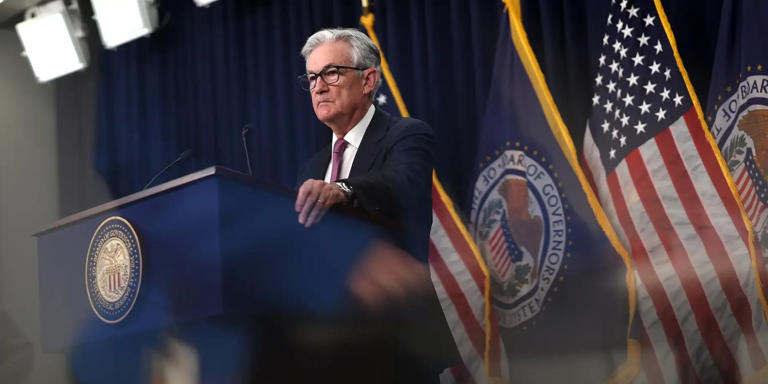Investors are expecting rate cuts. But what happens to markets if they don’t come this year?
Gambling on rate cuts has been a major theme in 2024, but as a string of hot economic data points has kept the Federal Reserve on its toes, some in markets have begun to wonder: what if the Fed doesn’t cut this year?
The prevailing trend of betting on rate cuts has dominated discussions in 2024. However, a succession of positive economic indicators has left the Federal Reserve in a state of vigilance. Consequently, a growing number of individuals in the markets have started to contemplate the possibility: what if the Fed opts not to cut rates this year? This shift in sentiment reflects the evolving dynamics between market expectations and the Federal Reserve’s response to economic data, adding a layer of uncertainty to future monetary policy decisions.
- Rate-cute outlooks have been clouded by hot economic data so far this year.
- Some market pros have been eyeing the possibility rates stay high in 2024.
- In that scenario, stocks could still rise, but bonds and real estate would be crushed.
Fed Chair Jerome Powell has been emphasizing the need for increased confidence, reiterating the central bank’s commitment to achieving its target inflation rate of 2%. However, recent economic data points have added complexity to Federal Reserve policy decisions and unsettled markets anticipating interest rate cuts. With a fourth-quarter GDP spike of 3.3%, a substantial influx of 353,000 new jobs in January, and inflation reaching 3.1%, the Fed faces a challenging landscape.
These robust economic indicators raise questions about the necessity and timing of interest rate adjustments, creating uncertainty among investors eagerly awaiting further guidance from the central bank.
The last few weeks of strong data have led some in the market to start raising the question of what might the impact be if Powell and Co. don’t cut this year, or at the very least, keep rates higher than markets are hoping.
Equities Poised for Strength, Bonds Facing Challenges Ahead
Bank of America analysts said in a note this week that S&P 500 stocks should still be favorably positioned, regardless of coming Fed moves.
“We remind investors that we expected strong returns this year not because of what the Fed would do in 2024, but because of what the Fed had already accomplished from March 2022 to now,” the note said.
Other market pros echoed this and said that while no cuts is not a likely scenario, the business cycle should be supportive of continued gains regardless of policy.
David Rosenberg, economist and founder of Rosenberg Research, offered insights into potential outperforming sectors amid current market conditions. He likened the situation to the proverbial “land of the blind,” suggesting that in relative terms, healthcare and consumer staples could emerge as top performers. This assessment reflects the stability and resilience typically associated with these sectors in uncertain economic environments.
Regarding bonds, Rosenberg highlighted the concept of “higher-for-longer,” indicating expectations for extended periods of elevated bond yields. He pointed out a strong correlation, around 90%, between expectations for monetary policy and longer-term Treasury bond yields. This correlation suggests that investors may witness the 10-year Treasury yield climb back up to approximately 4.7%, which is not far from the multi-decade highs observed at the end of the previous year. This projection underscores the potential for continued volatility and upward pressure on bond yields in the foreseeable future.
A continuation of higher interest rates also poses potential downside risks for bank stocks, BofA analysts said in a separate note.
One thing that keeps investors on guard is banks’ holdings of many lower-yielding bonds. Those bonds, which offer low returns, can’t offset the banks’ higher funding costs in a high-interest rate environment, creating a “negative carry” risk, the analysts said.
In a note, analysts at Bank of America expressed the view that a stronger economy typically signals improved credit quality and growth prospects. However, they noted investor apprehensions regarding the potential for an extended period of tight monetary policy, characterized by higher interest rates and quantitative tightening (QT), due to perceived liquidity-related risks.
David Rosenberg echoed these sentiments, emphasizing the potential risks faced by banks in such a scenario. He highlighted that if the Federal Reserve refrains from cutting interest rates due to concerns over inflation rather than economic growth, it could have decisively negative implications for bank stocks. This perspective underscores the delicate balance between economic strength, monetary policy decisions, and their impact on various sectors of the financial markets, particularly banking.
